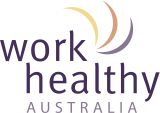
Ensuring the right people are in the right jobs is crucial to business success. To achieve this requires a clear understanding of the roles within your business, and the specific tasks involved. We’ve outlined the steps to best practice – from recruitment, to training, to helping workers remain fit for task.
1. Onsite injury management program
An onsite treatment service is a program used to address any musculoskeletal injury on site. It can also be used to help workers already on a WorkCover claim get back to work sooner. A fully integrated and proactive onsite service should also implement strategies to reduce the risk of injury, ensure appropriate candidates are placed in appropriate roles, and play a pivotal role in ensuring an employer is compliant in their responsibility to provide a safe work environment for its employees.
2. Pre-employment screens
A pre-employment screen is a risk management tool used to screen individuals for factors that may limit their ability to perform a job safely and effectively.
The screening process includes a detailed medical history, health history and a physical examination to determine a person’s ability to perform a task(s) in a workplace.
Having an onsite injury management program optimises the effectiveness of the pre-employment screen through a deeper understanding of the physical and mental demands associated with each role within the business.
3. Task analysis and risk assessments
This is a comprehensive analysis of the entirety of a job. It includes a detailed description of both physical and mental requirements, task and element requirements, task frequency, environmental conditions, necessary clothing and equipment required for a person or persons to complete the job.
- Identify high risk areas, and understand where a more detailed risk assessment is required.
- Assist with developing a training and induction strategy.
- Understanding the inherent requirements of a role will assist in developing strategies for training, induction and return to work.
Most companies are required to have this type of documentation in place for the hiring and training of their staff. It allows them to ensure the worker knows the demands of the job and has been provided with the appropriate training to carry it out in a safe and effective manner.
4. Compliance based manual handling
This is a classroom based presentation delivered to workers on the basics of safe lifting. It includes the basics of anatomy and how to best use the body while undertaking manual handling demands associated with their jobs.
- Manage the risks within a job or task
- General training on how to perform a task safely
- Helps supervisors identify risks and limit risks with manual handling tasks
- A higher than normal risk has been associated with a task(s)
- A specific task tends to have the same injury occurring frequently
- A group of employees are beginning work in a new task(s)
5. Task specific manual handling training
Experience has shown that compliance based manual handling does not always translate into the intended consequence of reducing injuries. Work Healthy Australia has solved this problem with a focus on providing task specific training.
Opportunities where a worker could undertake their task more safely are identified. This information is then used to carry out more specific training that engages closely with the employees and provides them with training pertinent to their task.
6. Work hardening programs
Implementing a work hardening program is aimed at gradually increasing the load and demands on tissues of a new worker new to employment or new to a role. By doing so it’s possible to minimise the risk of injury or early work related soreness.
This type of program can be carefully constructed through collaboration with your onsite injury management provider. It will commonly take into consideration the type of work, rotations, breaks, appropriate warm up advice and manual handling training.
7. Prehab training sessions
Prehab: a preventative, proactive training intervention aimed at protecting a worker or athlete from injury.
A prehab program can be used to target specific areas of the body to improve strength, stability, endurance, mobility and overall function. Prehab should be thought of as a measure that minimises the need for rehab.
8. Fit-for-task assessments
This is a physical assessment of an employee’s capacity to safely carry out a job. It is not as formal as a functional capacity evaluation (FCE) and may not involve WorkCover at all.
These can include a WorkCover related injury, non-work related injury, duty of care and general health related or an internal job transfer.
Sign up to our monthly enewsletter
"*" indicates required fields
